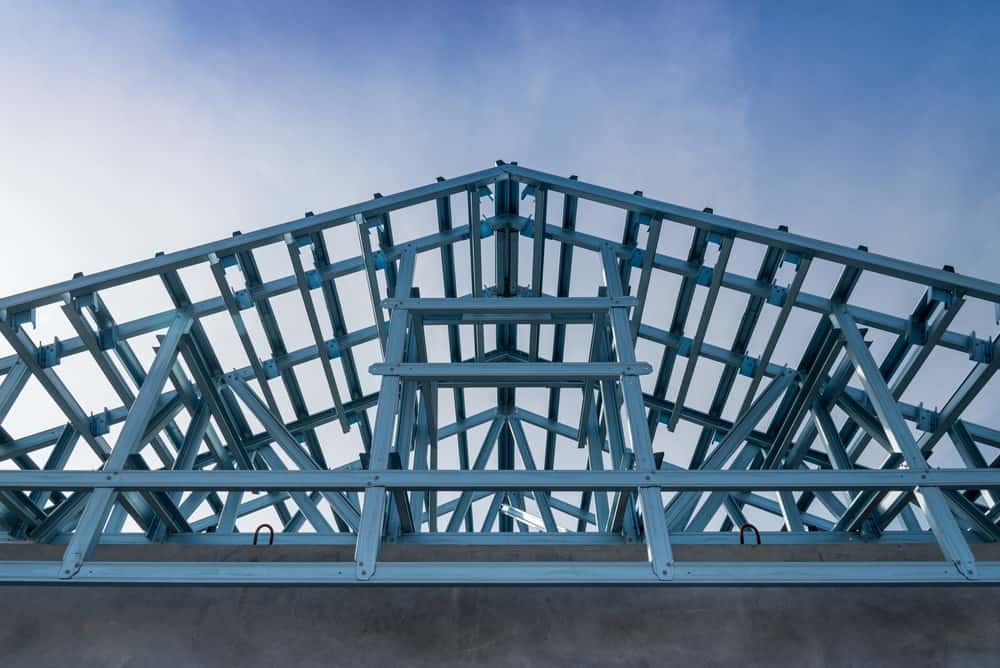Corrosion engineers agree that hot-dip galvanizing offers longer-lasting protection than treating with a zinc-rich primer coat. But which method of protecting steel from construction and fabrication makes better financial sense? Let’s start by contrasting the two methods of protecting steel against rust.
How Hot-Dip Galvanizing Works
Dipping steel in molten zinc is the generations-old process of making galvanized steel. Although the galvanizing process is not quite as simple as lowering steel parts into a vat of bubbling melted zinc, modern galvanizing coats steel with:
- A continuous layer of zinc that forms a thin layer of alloy beneath a thin, smooth layer of metallic zinc that
- Interlocked into a non-corroding, inert matrix that
- Provides predictable galvanic protection for the steel beneath the thin coating of zinc.
What is galvanic protection? When galvanized steel is exposed to water, salt, acid rain, and air pollution, its zinc coating acts as a sacrificial anode. What that term means is that zinc is always more reactive than iron with atmospheric and liquid corrosive chemicals. Zinc is more reactive with the elements than the steel it protects due to differences in electroconductivity that protect steel even as zinc itself corrodes — up to 40 times more slowly than the steel it protects. Hot-dip galvanizing can only be applied in the shop.
How Zinc-Rich Primer Works
Zinc-rich primer coats are paints containing microscopic, spherical particles of zinc suspended in a resin. Usually the primer coat is zinc in epoxy, but there are also primers made with zinc in polyurethane and zinc in vinyl. There are also primers that are rich in silicates. Zinc-rich primers coat steel with:
- A discontinuous covering of zinc particles that are
- Connected by a resin that
- May harden into a coating that is resistant to abrasion although not to chemical corrosive processes.
Zinc-rich primer coats may be followed by applications of sealer coats to extend the life of the primer. Zinc-rich primers also have to be applied in a shop, and they are subject to cracking if they are applied too thickly.
What Manufacturer Tests Don’t Tell You About Hot-Dip vs. Primer
Scores of manufacturer tests argue that, at least in the first year or two of a project, zinc-rich primers perform as well as galvanized steel. The testing lab acquires samples of galvanized steel and steel coated with zinc-rich primer and sealer and exposes them to continuous moisture. If the primer contains both zinc and silicates, it forms a crystalline coating of zinc silicate that helps it stand up to test conditions.
Those test conditions, however, don’t allow galvanized steel to develop its own crystalline protective coating of zinc carbonate. The pure, continuous zinc in hot-dip galvanized steel interacts with moisture to form a slippery, gel-like substance called zinc hydroxide, Then, when the zinc is allowed to dry out, the zinc hydroxide reacts with carbon dioxide in the atmosphere to form zinc carbonate. The zinc carbonate crystals in turn form an additional layer of protection over steel known as patina, with the continuous layer of zinc still beneath them. Biased comparison tests don’t allow galvanized zinc to reach its natural protective potential.
The Real Difference in Longevity Between Hot-Dip Steel and Steel Coated with Zinc-Rich Primer
NACE International Paper Number 08279, titled “Expected Service Life and Cost Considerations for Maintenance and New Construction Protective Coatings Work,” written by Jason L. Helsel, Robert Lanterman and Kirk Wissmar, lists lifespan expectations for a variety of combinations of pickled steel and molten zinc and zinc-rich primers. The differences are stark:
- A typical inorganic zinc/epoxy/polyurethane primer coat can be expected to last 30 years in a rural environment and 15 years in a highly polluted industrial environment.
- Hot-dip galvanized steel can be expected to last 68 years in a rural environment and 21 years in a polluted industrial environment (although improvements in air quality are pushing both of those figures much higher).
The initial cost of raw steel given a single coat of high-zinc primer can be somewhat less than the cost of galvanized steel. But the cost of steel painted with zinc-rich primer and even one layer of topcoat equals or exceeds the cost of galvanized steel. Over the 50-year life of a structure, steel protected with primer can be nearly five times as expensive as hot-dip galvanized steel. To save money and maintenance now and in the future, choose galvanized steel.

